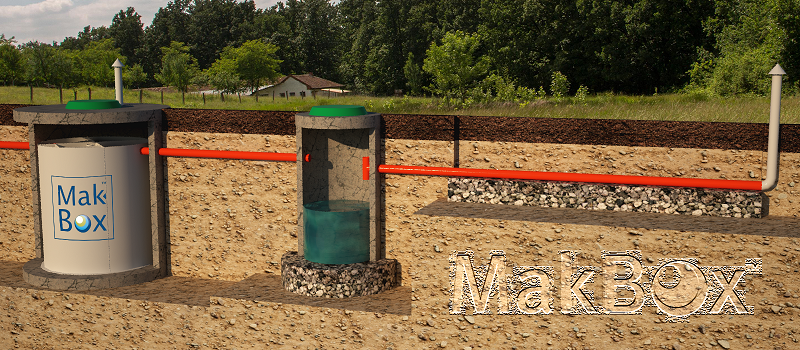The arrangement of the sewerage system is one of the first issues faced by the owner of the plot and the private house. This is especially true for objects that are not connected to the central water supply and sewerage systems. After all, without sewerage it is impossible to normally use the usual comfortable benefits of civilization.
All types of sewer systems can be divided into two categories:
- Accumulative. Drains accumulate in a single reservoir: an airtight tank or a cesspool.
- Treating. Different types of septic tanks for filtration, complex treatment and pumping of sewage.
Types of sewer systems
Depending on the principle of operation and method of treating, sewer systems can be divided into several types:
- Cesspools. The oldest type of sewerage, which until recently had no alternative. This is a bottomless well, the walls of which are reinforced with a more stable material: concrete, brick, rings. Leaking into the soil at the bottom, the water is purified naturally. Organic waste accumulates in the form of sludge, and over time it must be pumped out and cleaned. Today, this is an outdated and not the most favorable option for a residential building, especially if the house is inhabited permanently.
- Storage tanks. Waste flows into an airtight plastic or metal tank, which is cleaned as it is filled. Suitable for areas with high groundwater level, protecting the soil against contamination.
- Single-chamber septic tank. The simplest system resembling a cesspool. The bottom of the well is covered with gravel and coarse sand, passing through which the water is better purified. In addition to cleaning the pit, you need to periodically change the gravel and sand filler.
- Two-chamber septic tank. It works on the principle of overflow settling wells. In one – a sealed bottom, on which solid waste settles down during sedimentation, in the other – a filler that filters water.
- Septic tank with filter. One tank is divided into several segments with different treatment methods. First, the waste is deposited in the settling tank, after which the water in the other chamber is treated by biological methods – using anaerobic bacteria. After the water is fed to the filtration field for final soil treatment.
- Biological treatment station with biofilter. This is a full-fledged deep treatment plant that can be installed in a private home even with high groundwater level. The tank is also divided into sections with primary settling and biological treatment with a constant supply of air. The treated effluents are discharged into a separate tank, well or drainage ditch. In some cases, water after such stations can even be reused for irrigation.
- Biological treatment station with additional purification unit. The system with forced air supply differs from the usual septic tank with the biofilter the accelerated cycle which is stimulated forcibly.
How to choose a sewer system
- When choosing a suitable option for a private home, you must take into account the following nuances:
- Live in the house permanently or temporarily, depending on the season;
- How many people live in the house;
- • What is the average water consumption per person;
- • How many sources of consumption and how they are located (bathrooms, showers, toilets, sinks, washing machines and dishwashers, etc.);
- • The size of the site and the area under the treatment plant;
- Type and structure of soil, depth of groundwater;
- • Climatic and other individual features of the region.
The “Aquapolymer Engineering” company offers a full range of works on the designing, approval, manufacture, assembly and installation of biological treatment plants, sewage pumping stations and other engineering structures.

